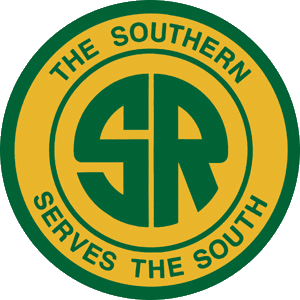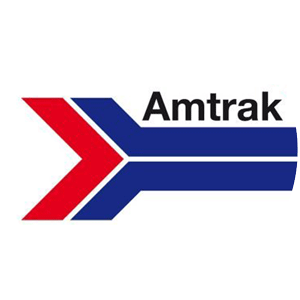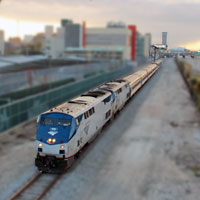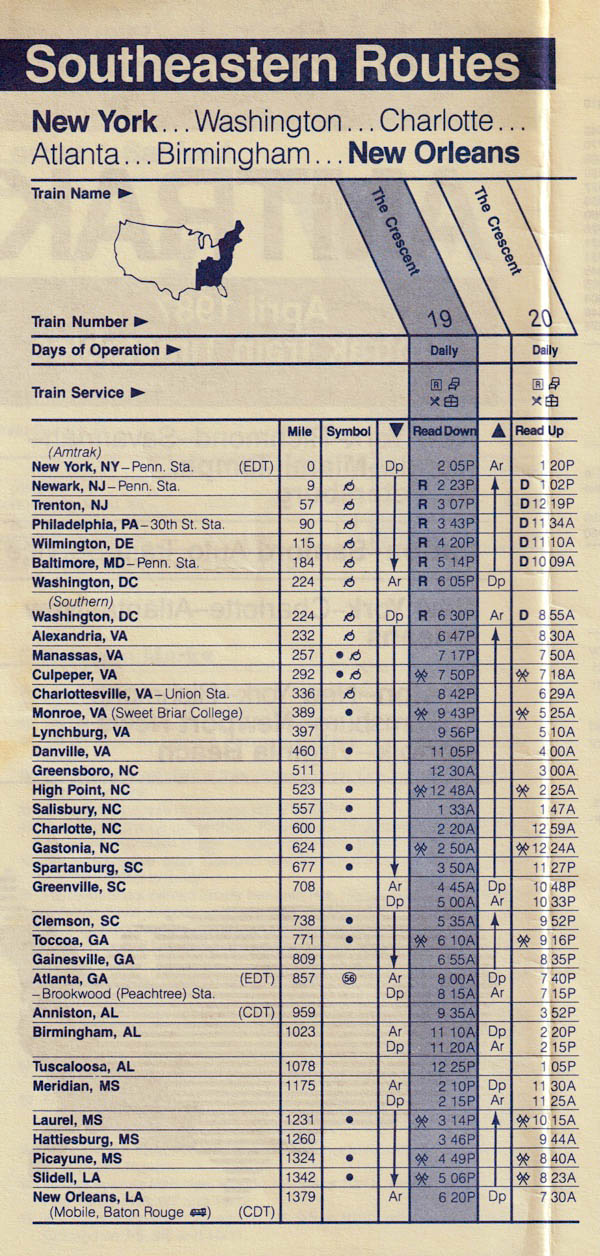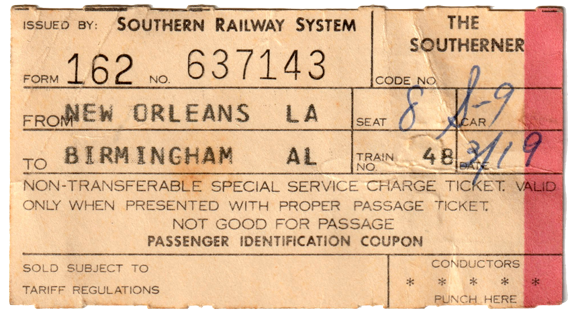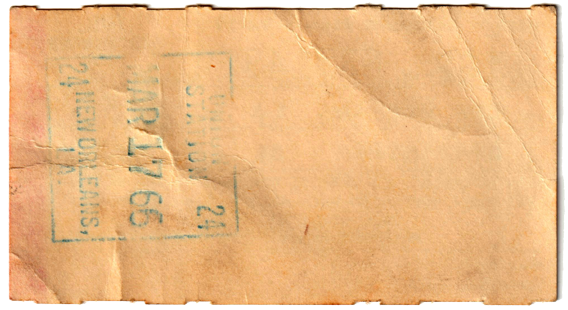

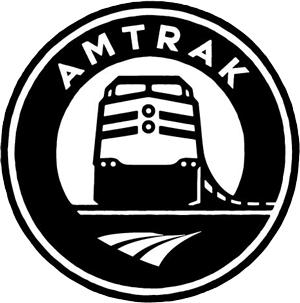
Crescent

Picayune, Ms / Jul 2019 / RWH

 he daily Crescent is a passenger train operated by Amtrak in the eastern part of the United States. It operates 1,377 miles between Pennsylvania Station in New York City and Union Passenger Terminal in New Orleans, as train numbers 19 and 20. Most of the route of the Crescent is on the Norfolk Southern trackage. The Crescent passes through more states, including the District of Columbia, than any other Amtrak route.
he daily Crescent is a passenger train operated by Amtrak in the eastern part of the United States. It operates 1,377 miles between Pennsylvania Station in New York City and Union Passenger Terminal in New Orleans, as train numbers 19 and 20. Most of the route of the Crescent is on the Norfolk Southern trackage. The Crescent passes through more states, including the District of Columbia, than any other Amtrak route.
In the 1870s, the Richmond & Danville Railroad, predecessor of the Southern Railway, established the "Piedmont Air Line Route", which connected the northeastern states with Atlanta and New Orleans. The Southern Express operated over these routes on an advertised time of 58 hours end to end.
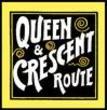 In 1891 the R&D launched the Washington & Southwestern Vestibuled Limited, which connected Washington with Atlanta and is thus the original ancestor of today's Crescent. Later the Washington-Atlanta routing expanded via the West Point Route from Atlanta to Montgomery and the Louisville & Nashville Railroad from Montgomery to New Orleans. New York City was was added to the schedule via a connection in Washington with the Pennsylvania Railroad's Congressional Limited. Scheduled time for the New York to New Orleans run was advertised as a "40-hour, unprecedented" trip. Because of the popularity of this service, the Vestibule eventually became a solid train between New York and New Orleans. It carried the first dining cars to operate between those two cities. After the R&D was succeeded by the Southern Railway in 1894, the train was called the Washington & Southwestern Limited southbound, and the New York Limited northbound. By 1906, the train had been renamed the New York & New Orleans Limited.
In 1891 the R&D launched the Washington & Southwestern Vestibuled Limited, which connected Washington with Atlanta and is thus the original ancestor of today's Crescent. Later the Washington-Atlanta routing expanded via the West Point Route from Atlanta to Montgomery and the Louisville & Nashville Railroad from Montgomery to New Orleans. New York City was was added to the schedule via a connection in Washington with the Pennsylvania Railroad's Congressional Limited. Scheduled time for the New York to New Orleans run was advertised as a "40-hour, unprecedented" trip. Because of the popularity of this service, the Vestibule eventually became a solid train between New York and New Orleans. It carried the first dining cars to operate between those two cities. After the R&D was succeeded by the Southern Railway in 1894, the train was called the Washington & Southwestern Limited southbound, and the New York Limited northbound. By 1906, the train had been renamed the New York & New Orleans Limited.
The train was re-equipped and renamed the Crescent Limited by the mid 1920s, now an all-Pullman extra-fare train. By 1938 the name was shortened to the Crescent. It was dieselized in 1941 and streamlined in 1949. The Crescent carried through sleepers of the "Washington-Sunset Route" in conjunction with the Southern Pacific west of New Orleans to Los Angeles and return.
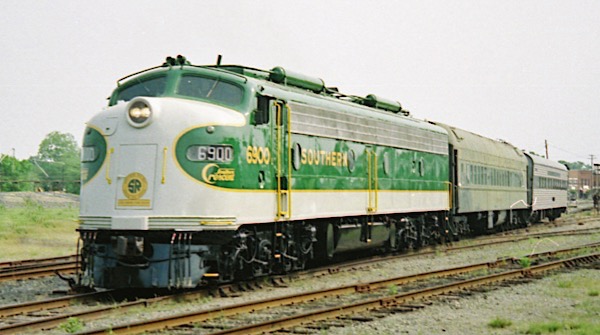 By the late 1960s, as Southern's railway partners in the Crescent route sought to discontinue passenger services, Southern rerouted the train to an all-Southern route and operated it as the Southern Crescent between Washington's Union Station and New Orleans. The Southern Crescent inaugurated service in 1970 by combining two trains that had run separately between New York and New Orleans: the Southerner, which operated over the Southern Railway only, between New Orleans and Atlanta via Birmingham; and the original Crescent, which had previously used Atlanta & West Point Railroad, Western Railway of Alabama and Louisville & Nashville Railroad trackage in combination between New Orleans and Atlanta and Mobile. For the newly combined Southern Crescent, Southern moved the train to its Birmingham route and numbered it 1 southbound and 2 northbound.
By the late 1960s, as Southern's railway partners in the Crescent route sought to discontinue passenger services, Southern rerouted the train to an all-Southern route and operated it as the Southern Crescent between Washington's Union Station and New Orleans. The Southern Crescent inaugurated service in 1970 by combining two trains that had run separately between New York and New Orleans: the Southerner, which operated over the Southern Railway only, between New Orleans and Atlanta via Birmingham; and the original Crescent, which had previously used Atlanta & West Point Railroad, Western Railway of Alabama and Louisville & Nashville Railroad trackage in combination between New Orleans and Atlanta and Mobile. For the newly combined Southern Crescent, Southern moved the train to its Birmingham route and numbered it 1 southbound and 2 northbound.
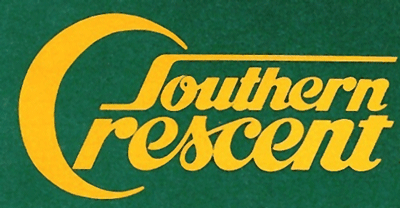 Southern Railway initially opted out of Amtrak when it was formed in 1971. Amtrak, now assuming the services of the former Penn Central, handled the Southern Crescent between New York and Washington. During the mid-1970s, Southern only operated tri-weekly between Atlanta and New Orleans, carrying a run-through Amtrak sleeper on those days to connect to the Sunset Limited.
Southern Railway initially opted out of Amtrak when it was formed in 1971. Amtrak, now assuming the services of the former Penn Central, handled the Southern Crescent between New York and Washington. During the mid-1970s, Southern only operated tri-weekly between Atlanta and New Orleans, carrying a run-through Amtrak sleeper on those days to connect to the Sunset Limited.
The Southern Crescent was one of the two last privately operated long-distance passenger trains in the United States. The other was the Rio Grande Zephyr, which operated until 1983. Lost revenue and equipment replacement expenses forced Southern to turn over operation of the train to Amtrak in early 1979. Amtrak once again shortened the name to Crescent, renumbering it 19 southbound and 20 northbound.

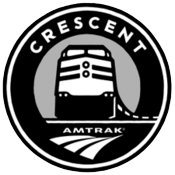 Between the front door of America's Eastern Seaboard, Amtrak's famous Northeast Corridor, and the equally well-known delights of America's "Most Interesting City," New Orleans, lays the authentic gateway to the American South and its living history. From twinkling Northeast cityscapes to shining Blue Ridge foothills to "new South" cities like Charlotte, Atlanta and Birmingham, to the Deep South and its shimmering, subtropical Louisiana swamp country – the Crescent shoots for its namesake moon and hits the stars as well. See the bombast of Broadway, the rich Civil War history of the South and the magic of the "Crescent City." The Crescent doesn't just promise the moon – it delivers!
Between the front door of America's Eastern Seaboard, Amtrak's famous Northeast Corridor, and the equally well-known delights of America's "Most Interesting City," New Orleans, lays the authentic gateway to the American South and its living history. From twinkling Northeast cityscapes to shining Blue Ridge foothills to "new South" cities like Charlotte, Atlanta and Birmingham, to the Deep South and its shimmering, subtropical Louisiana swamp country – the Crescent shoots for its namesake moon and hits the stars as well. See the bombast of Broadway, the rich Civil War history of the South and the magic of the "Crescent City." The Crescent doesn't just promise the moon – it delivers!
Today's Crescent is the lineal descendent of the Washington and Southwestern Vestibuled Limited inaugurated in 1891 by the Richmond and Danville Railroad. Advertised as providing "a service second to none," it carried drawing room and stateroom sleeping cars, dining cars, library and observation cars that were gas lighted and equipped with running water. Eventually the Southern Railway operated both the Southerner and the Crescent between New York City and New Orleans and the successor, the Southern Crescent. The Southern Crescent was a standout operation until the very end in 1979, when Amtrak took over the route and restored the historic Crescent name to the train.

Meridian, Ms / Dec 2016 / RWH
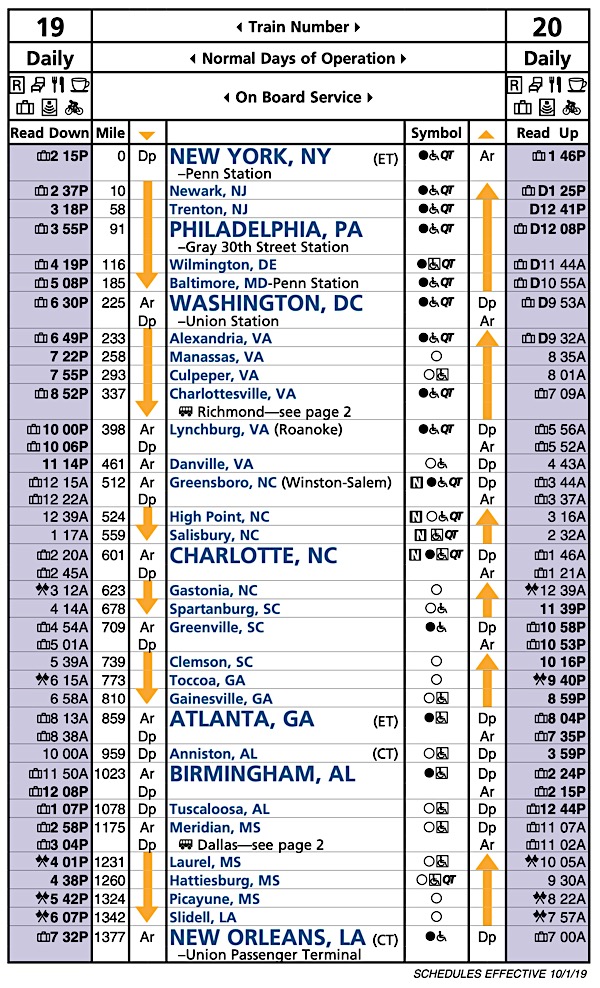
2019 Amtrak timetable / collection

2019 Amtrak timetable / collection
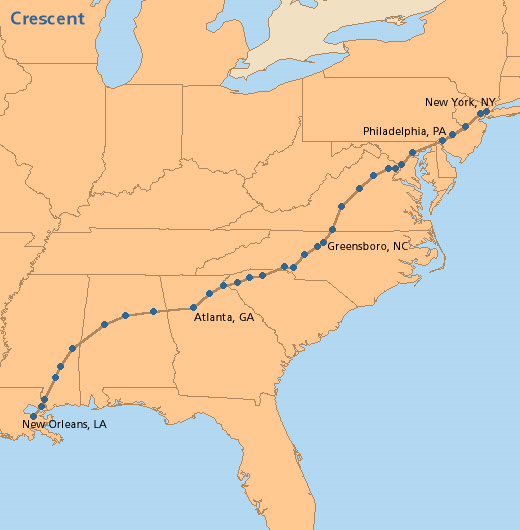
Crescent route map / web
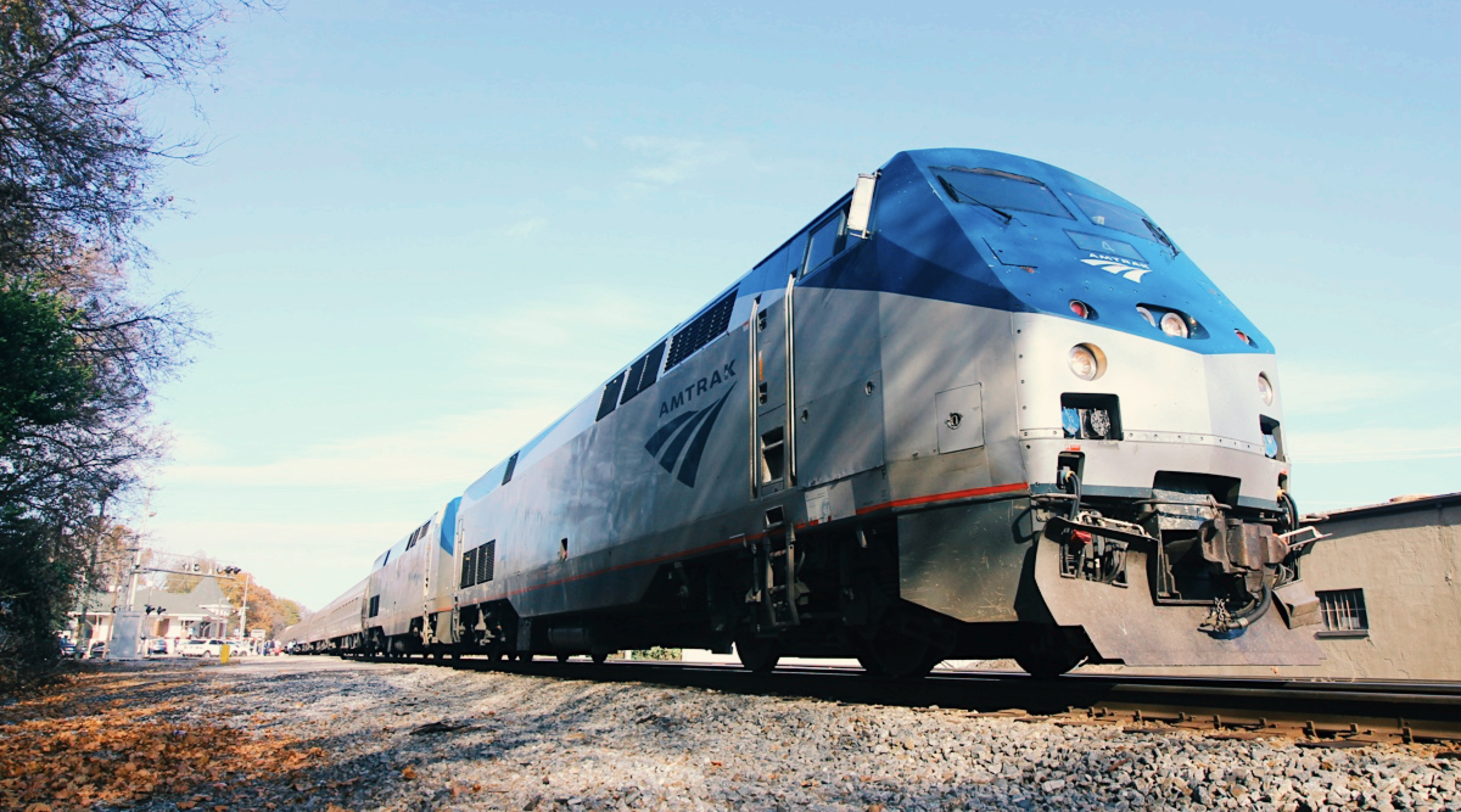
Tuscaloosa, Al / Nov 2019 / RWH

The Crescent Limited was the Southern Railway’s most famous flagship train. The Crescent Limited ran between New York City and New Orleans on the Pennsylvania Railroad north of Washington DC and on the Southern Railway on its busy mainline between Washington and Atlanta via Charlotte NC. South of Atlanta, the Crescent Limited was handed off to the Atlanta & West Point (Alabama), the Western Railway of Alabama, and the Louisville & Nashville between Montgomery Alabama and New Orleans. The train was called the Crescent Limited because Crescent City is a nickname for New Orleans.
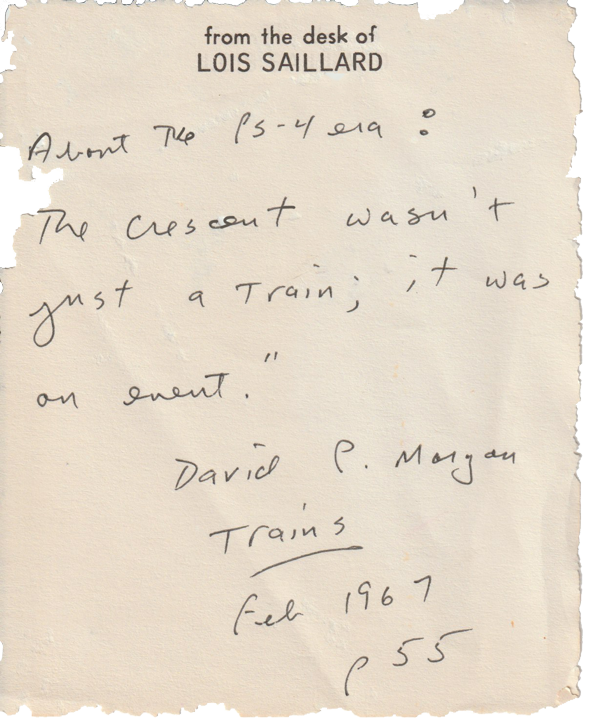
Louis Saillard note / collection
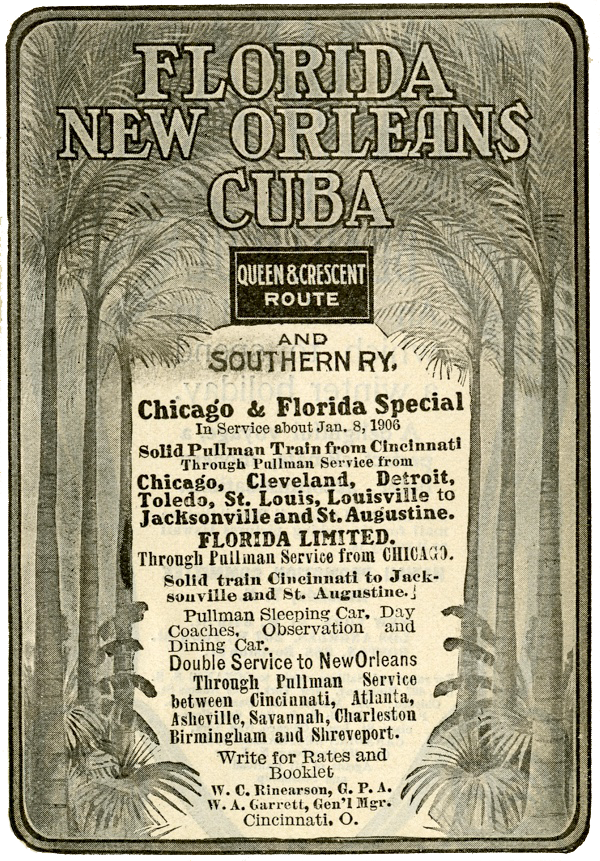
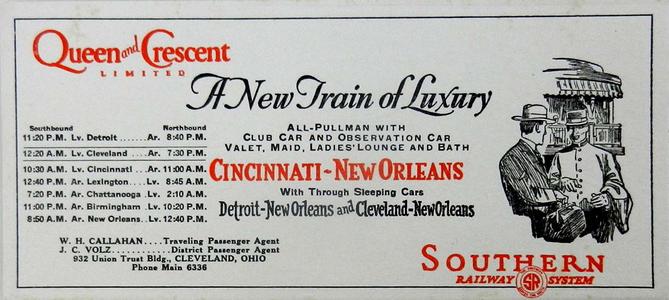

1972 Official Guide ad / collection

Southern Crescent / North Shore, La / 1978 / collection
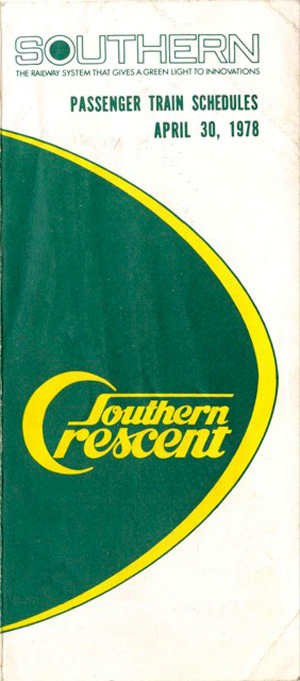
1978 timetable / collection
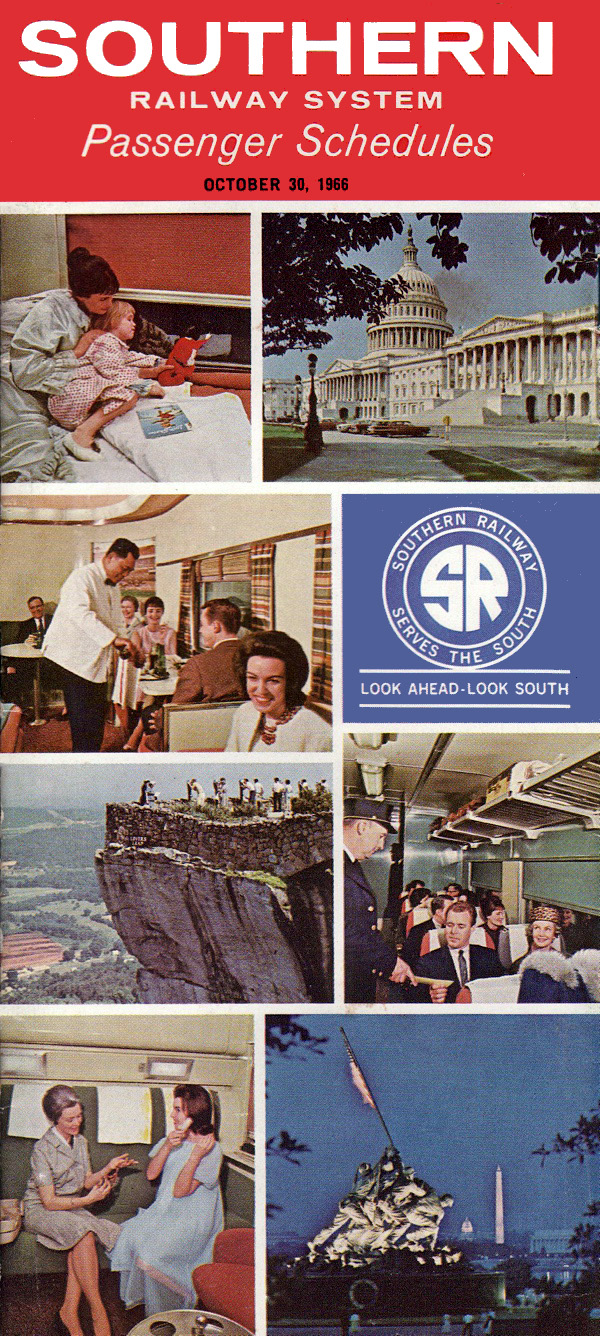
1966 timetable / collection

1968 timetable / collection
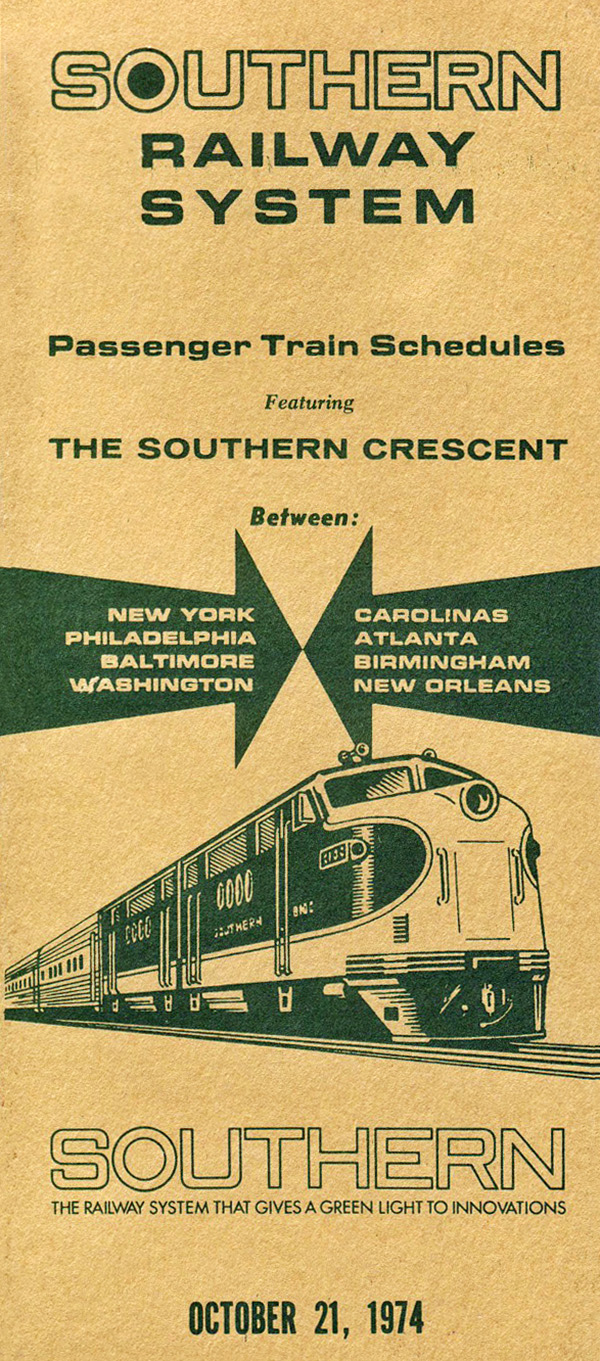
1974 timetable / collection
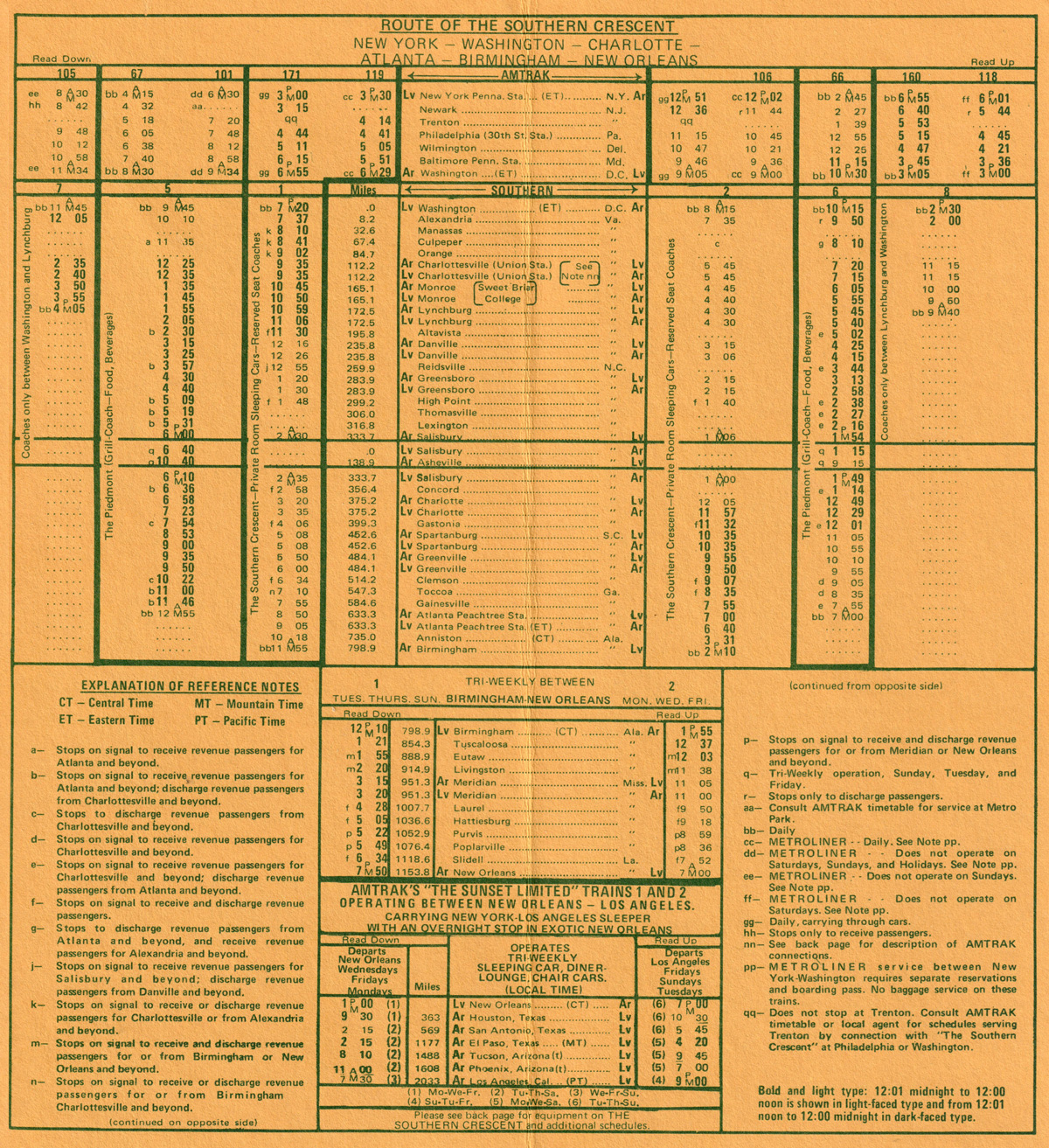
1974 timetable / collection
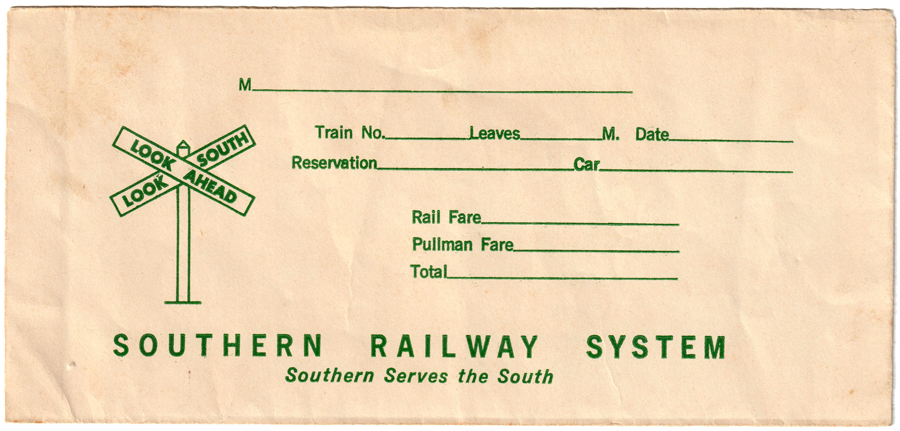
collection
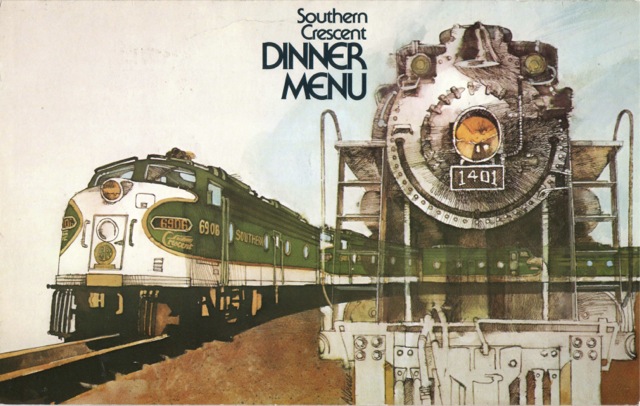
menu cover / collection

postcard / collection
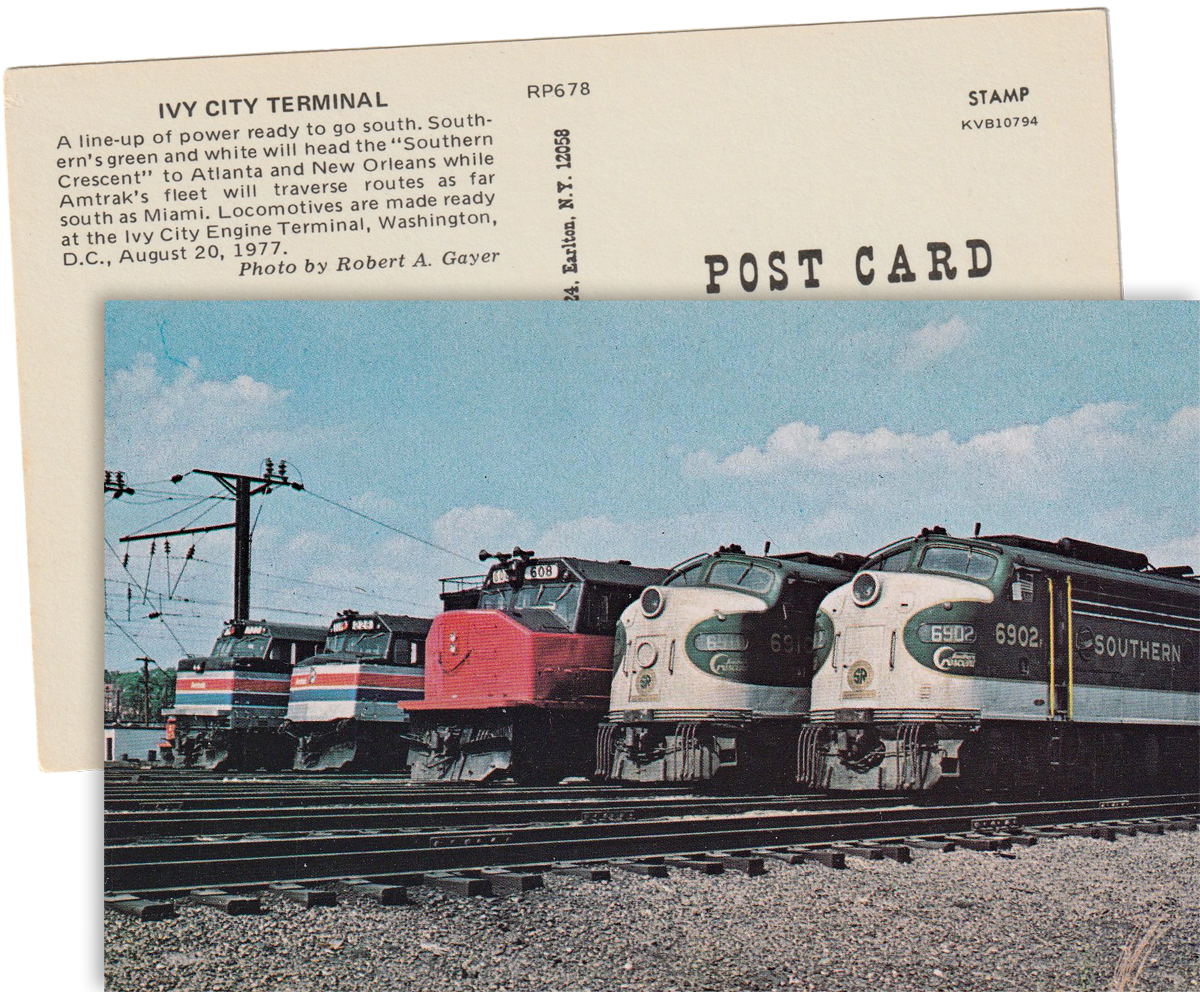
postcard / collection
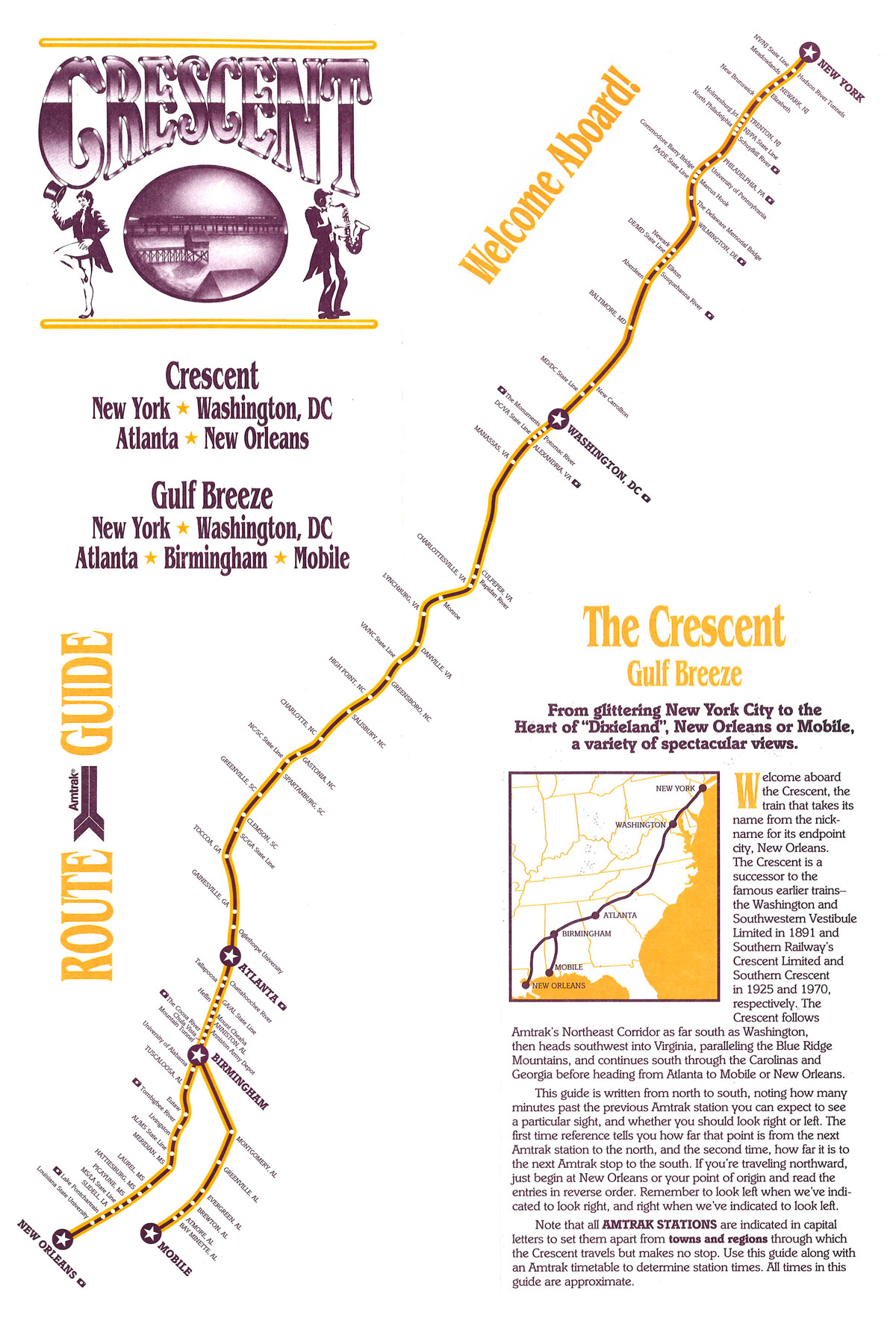
adapted from 1983 Amtrak Crescent Route Guide / RWH
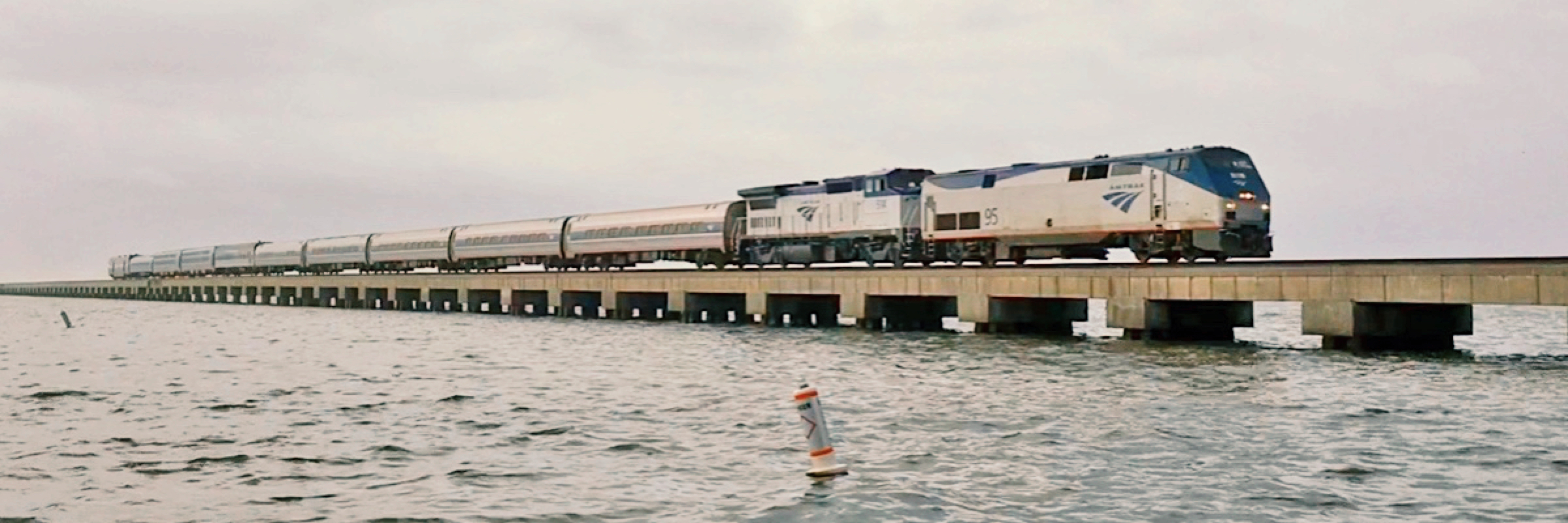
North Shore, La / Feb 2020 / RWH
Scrapbooks
Lagniappe



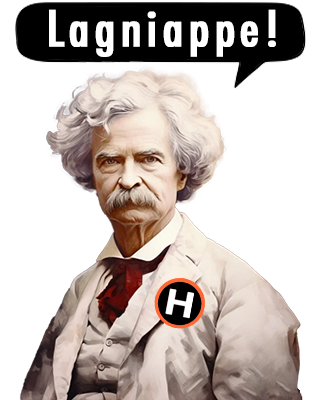
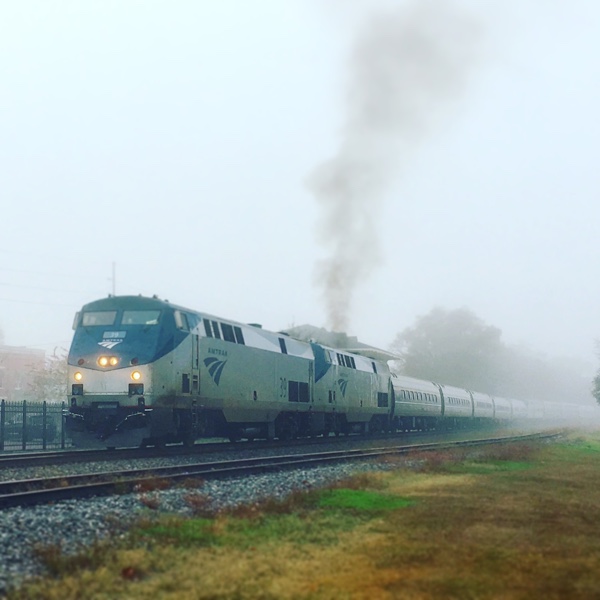
Secondhand Smoker
Slidell, La / Dec 2016 / RWH
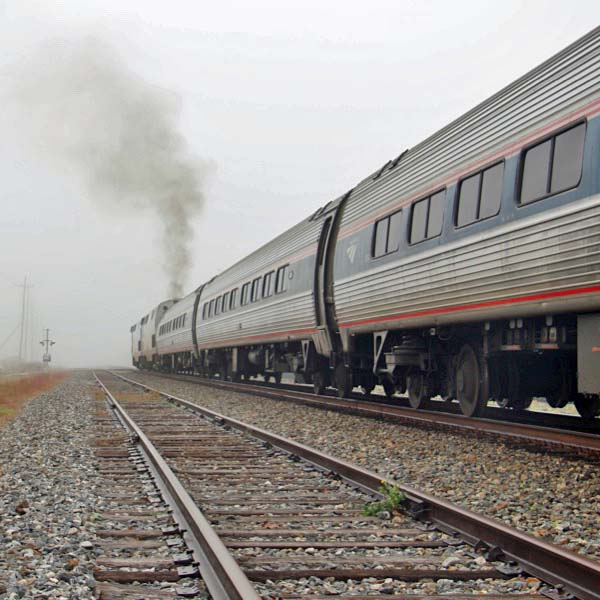
"Highball North, No. 20"
Slidell, La / Dec 2016 / RWH
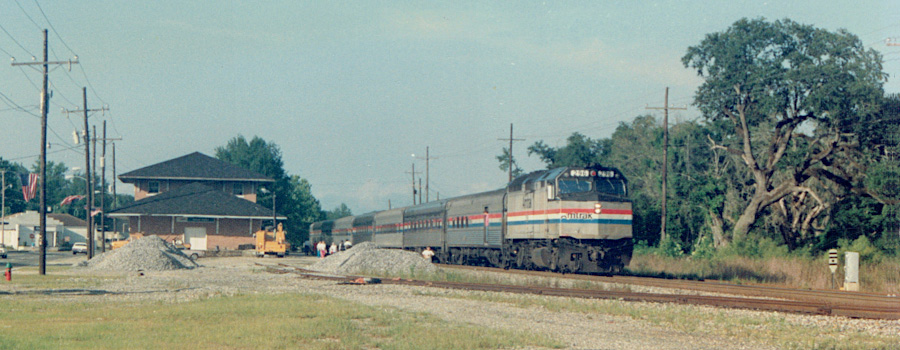
Sunny Side Up in Slidell
Slidell, La / 1980s / JCH
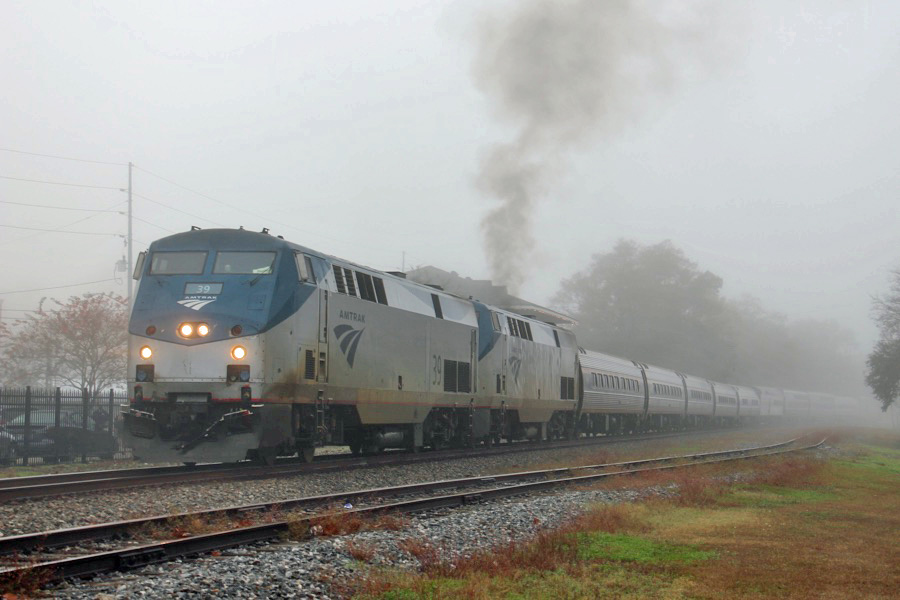
The Crescent Calls on Sildell
Slidell, La / Dec 2016 / RWH
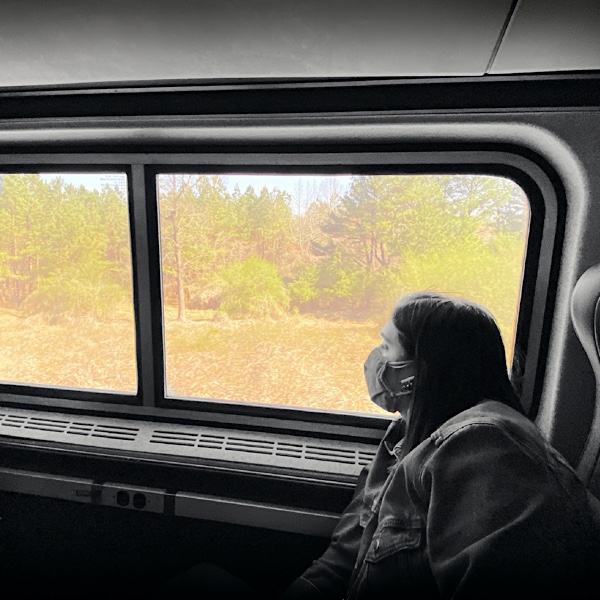
Crescent Colors
Mar 2021 / RWH
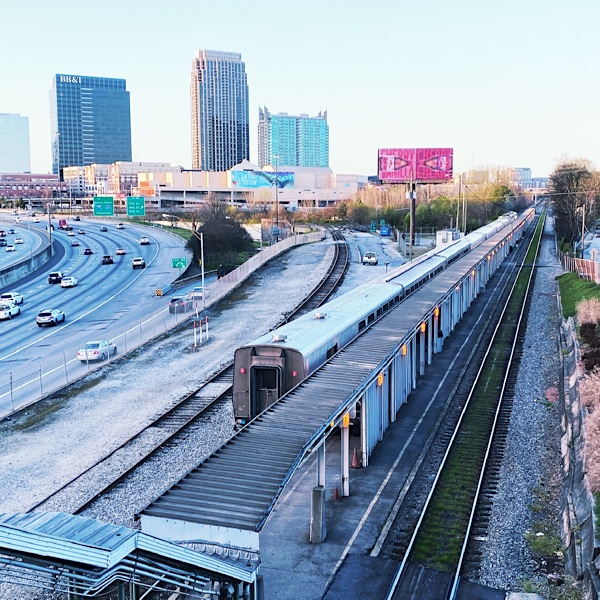
Downtown Life
Atlanta, Ga / Mar 2021 / RWH
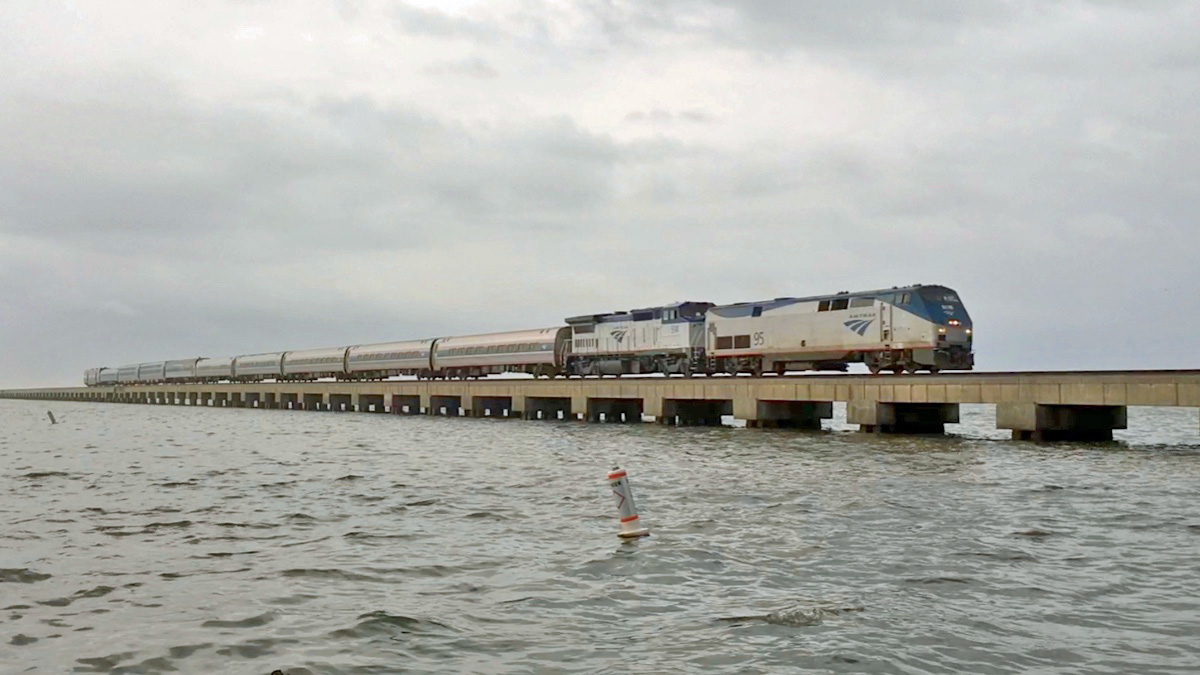
Crescent Crossing
North Shore, La / Dec 2016 / RWH

Pilgrims' Progress
Tuscaloosa, Al / Mar 2021 / RWH

Airlock Twenty
Mar 2021 / RWH
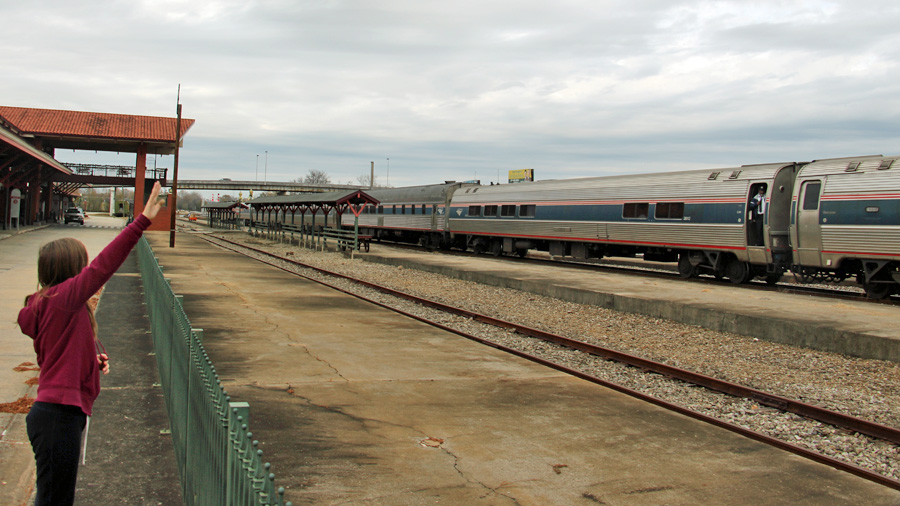
Hail to the Chief
Meridian, Ms / Dec 2016 / RWH
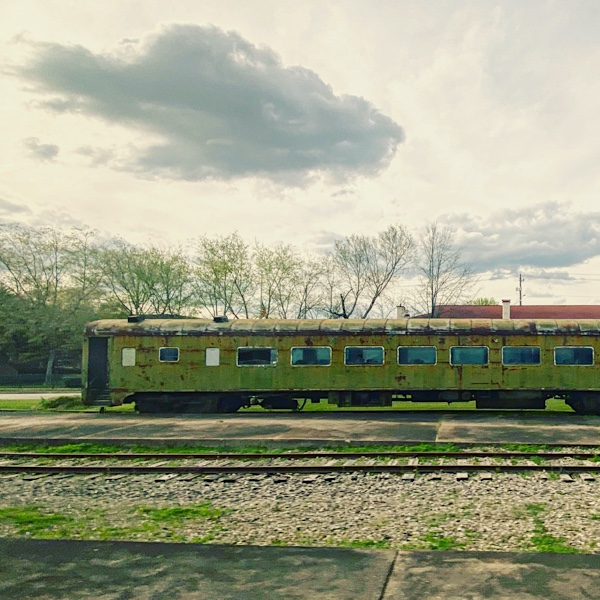
Retirement
Meridian, Ms / Mar 2021 / RWH
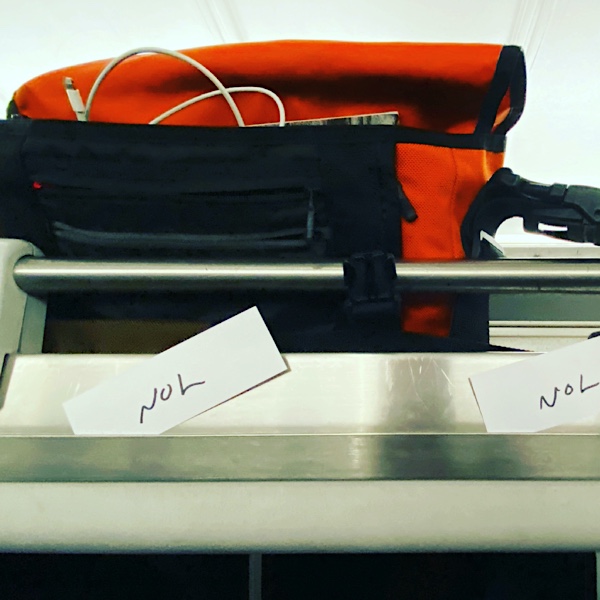
Destinations
New Orleans, La / Mar 2021 / RWH

Midday Meridian Movers
Meridian, Ms / Dec 2016 / RWH

Monet Moment
Lake Pontchartrain, La / Mar 2021 / RWH

Green Light District
New Orleans, La / Mar 2021 / RWH
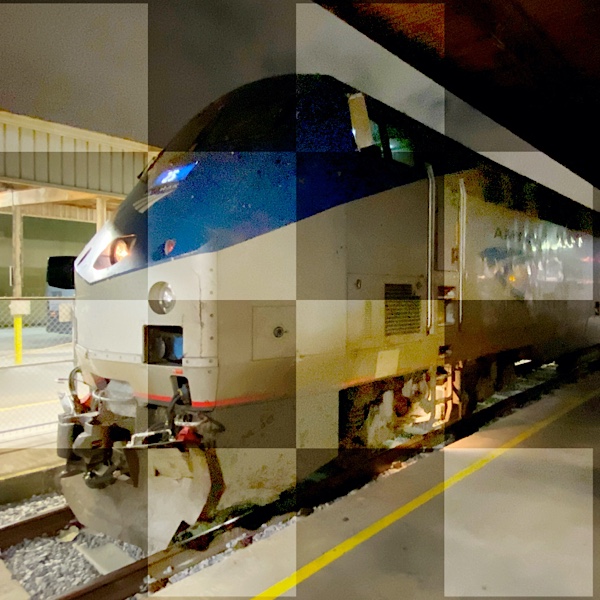
Genesis Moment
New Orleans, La / Mar 2021 / RWH
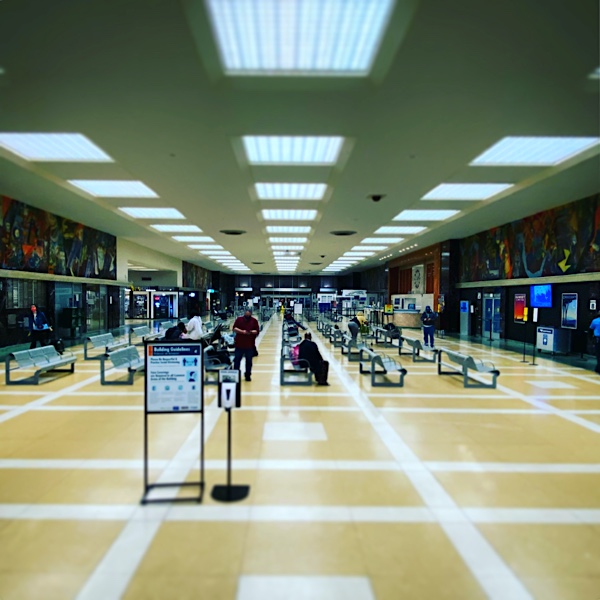
Terminal Squareness
New Orleans, La / Mar 2021 / RWH

Time Traveler
Mar 2021 / RWH
 The Southerner
The Southerner
The Southerner was a streamlined passenger train operated by the Southern Railway between New York City and New Orleans, Louisiana. It operated from 1941 to 1970. In 1970, the Southern combined the Crescent with the Southerner to form the Southern Crescent. This train became Amtrak's Crescent on February 1, 1979.
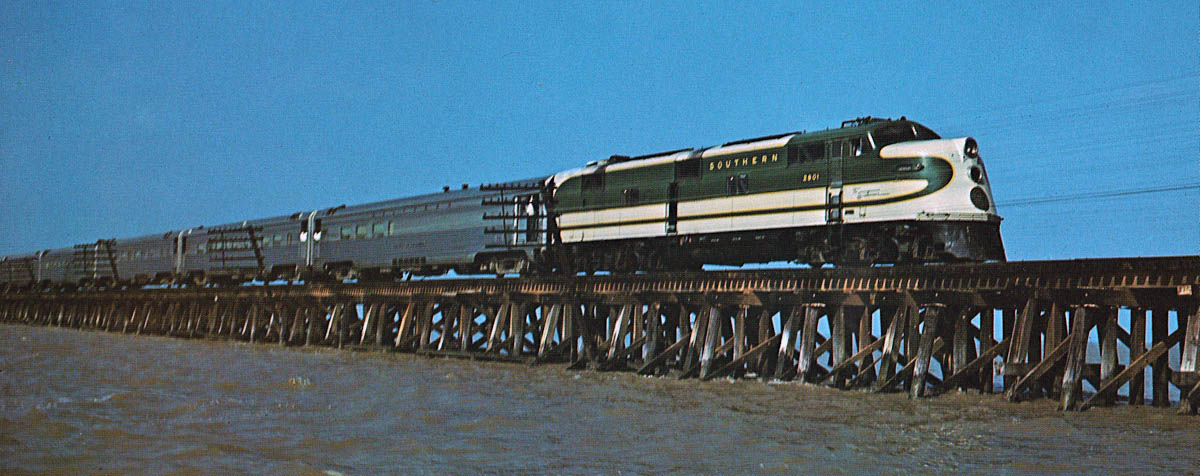
Southerner over Lake Pontchartrain / collection

postcard / collection
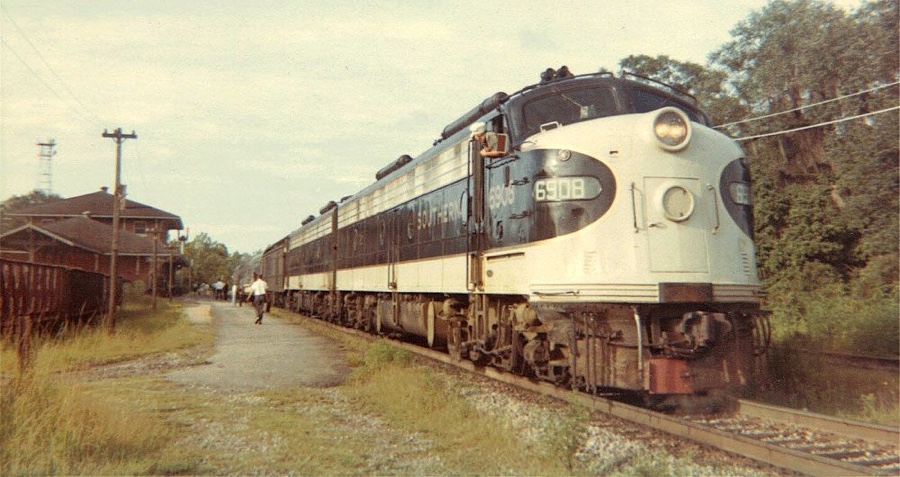
Southerner / Slidell, La / Aug 1967 / Larry Tuttle
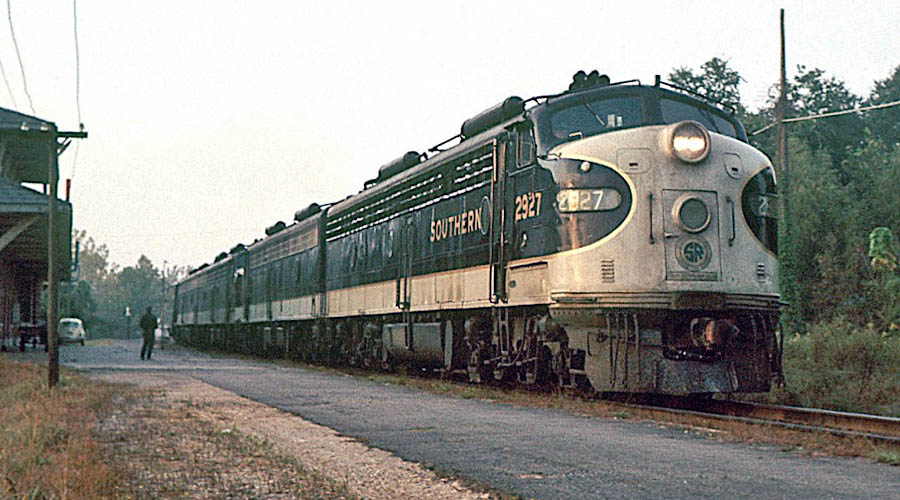
Slidell, La / Oct 1970 / James Selzer Jr. / Michael Palmieri collection

Slidell, La / Aug 1971 / James Selzer Jr. / Michael Palmieri collection
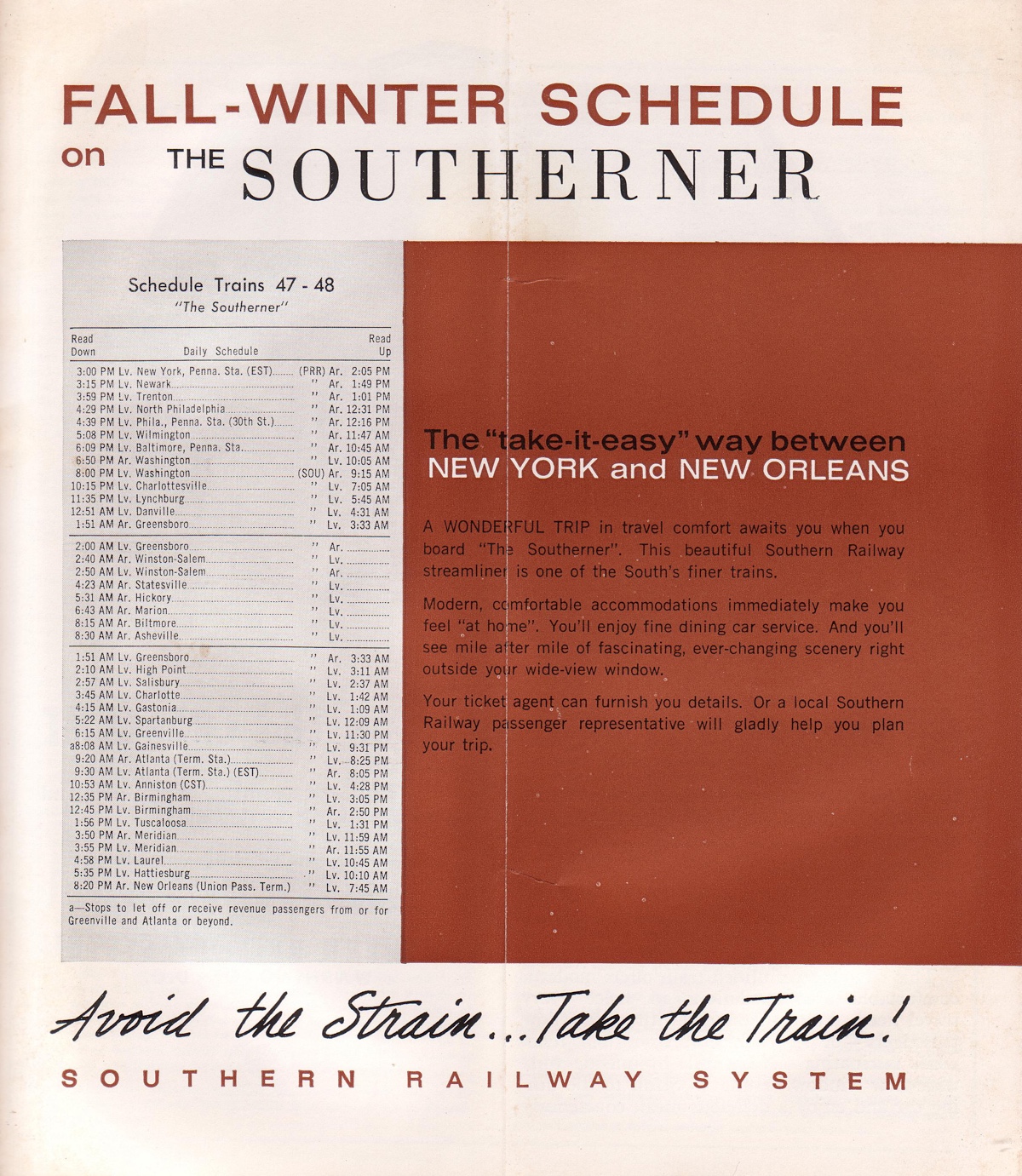
Southerner timetable / 1960s / collection

See also our Southern Railway in Louisiana scrapbook elsewhere in Mainlines
Snapshots

Atlanta, Ga / Mar 2020 / RWH

Atlanta, Ga / Mar 2020 / RWH
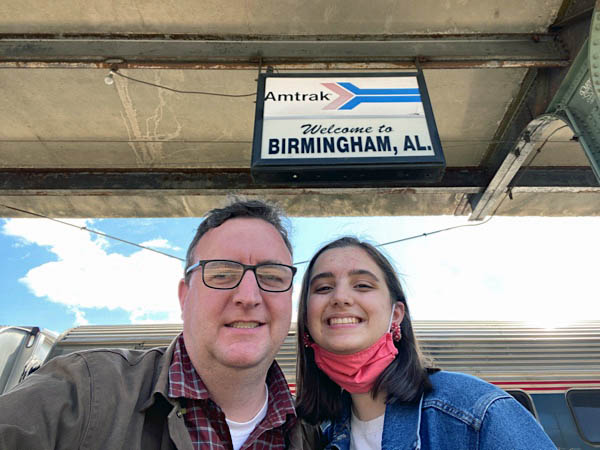
Birmingham, Al / Mar 2021 / RWH

Anniston, Al / Aug 2019 / RWH
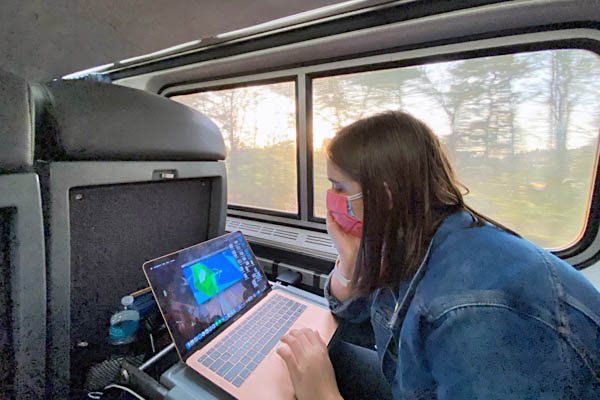
Mar 2021 / RWH

Mar 2021 / RWH
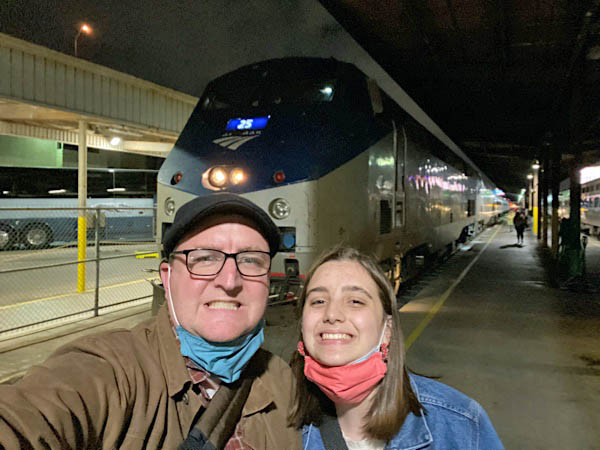
New Orleans, La / Mar 2021 / RWH

New Orleans, La / Mar 2021 / RWH
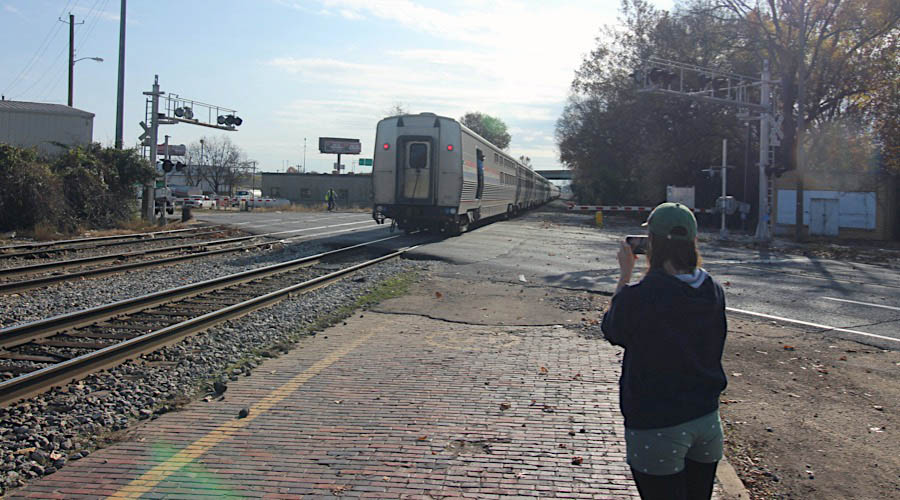
Tuscaloosa, Al / Nov 2019 / RWH

Tuscaloosa, Al / Nov 2019 / RWH
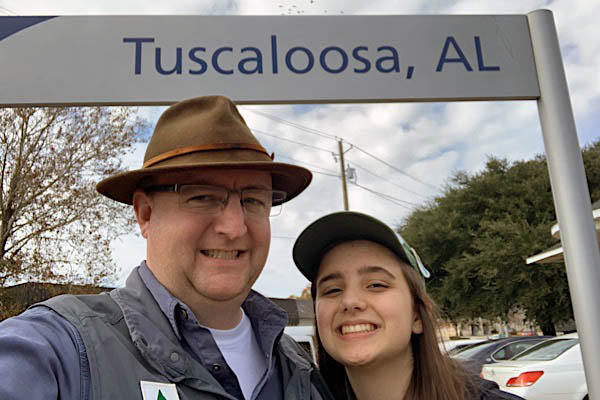
Tuscaloosa, Al / Nov 2019 / RWH
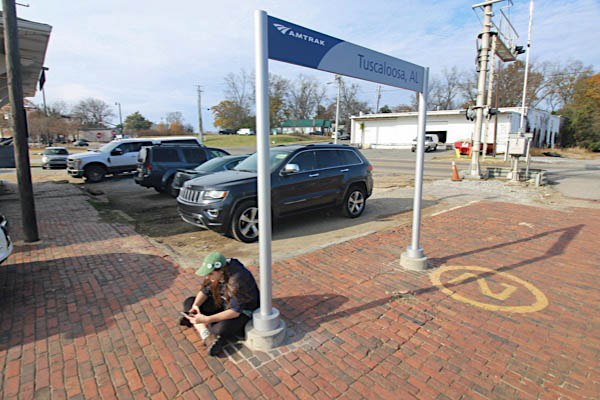
Tuscaloosa, Al / Nov 2019 / RWH

Meridian, Ms / Dec 2016 / RWH
Links / Sources
- Amtrak's Crescent route guide
- Wikipedia article for the Crescent route
- Southern Crescent Takes Sentimental Journey

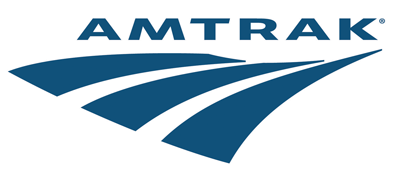
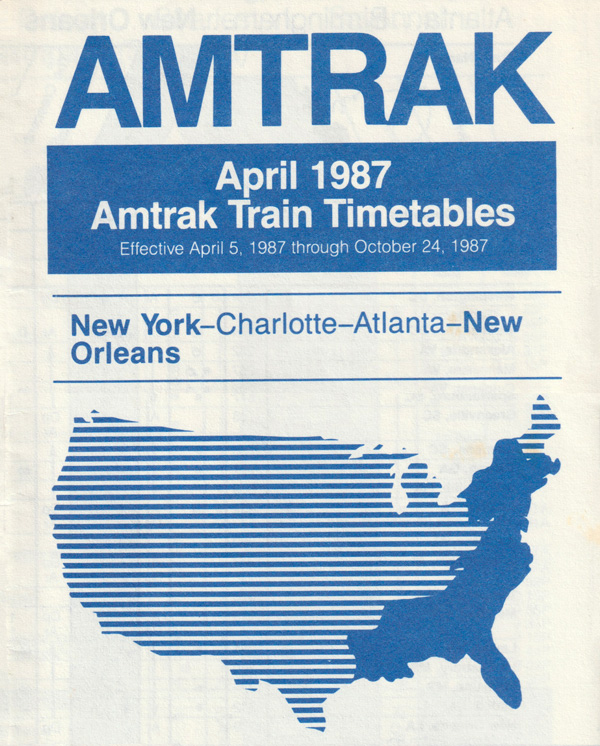

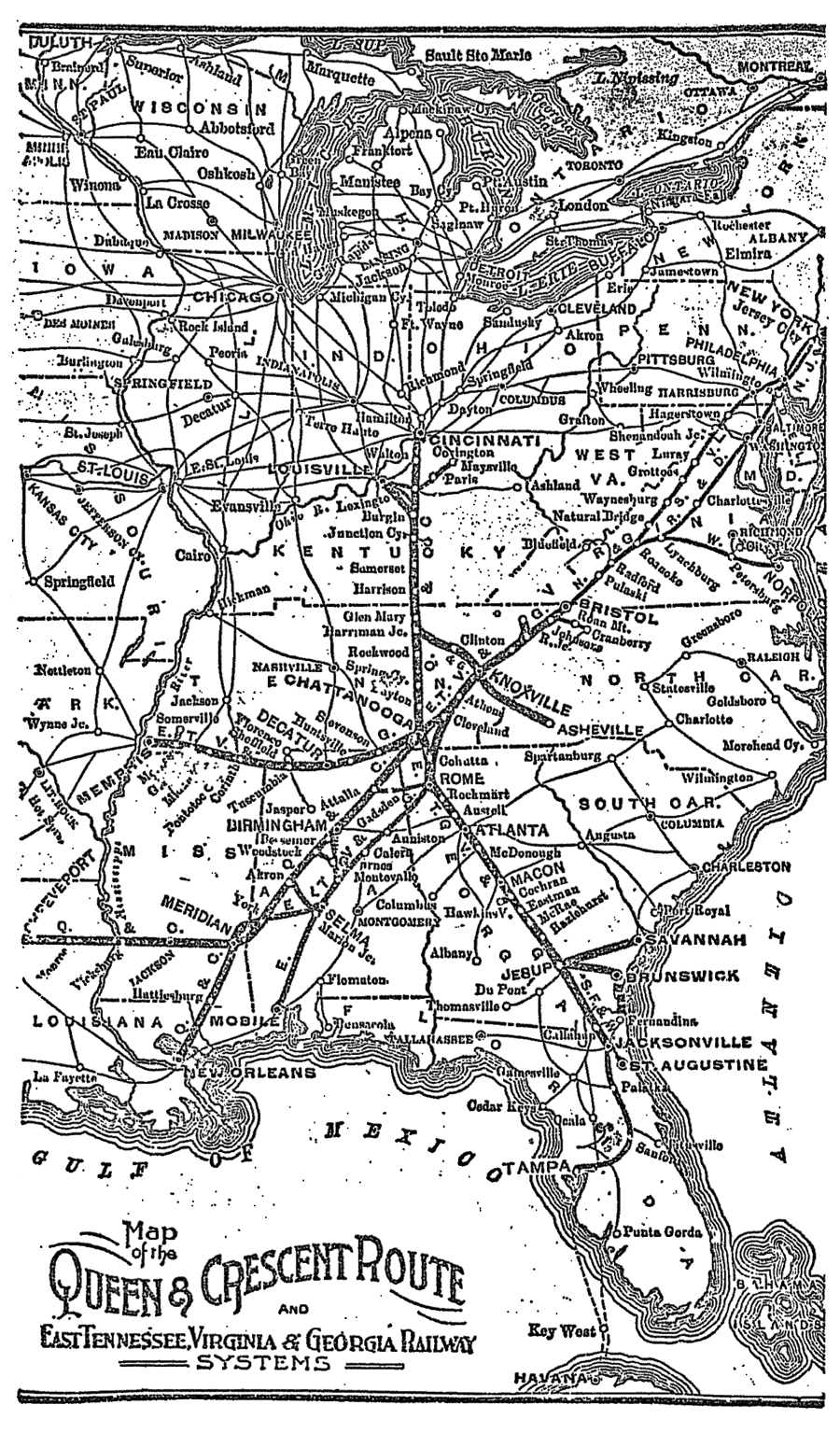
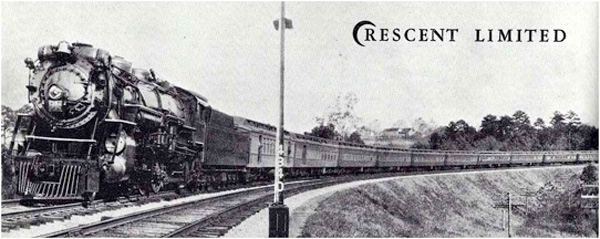
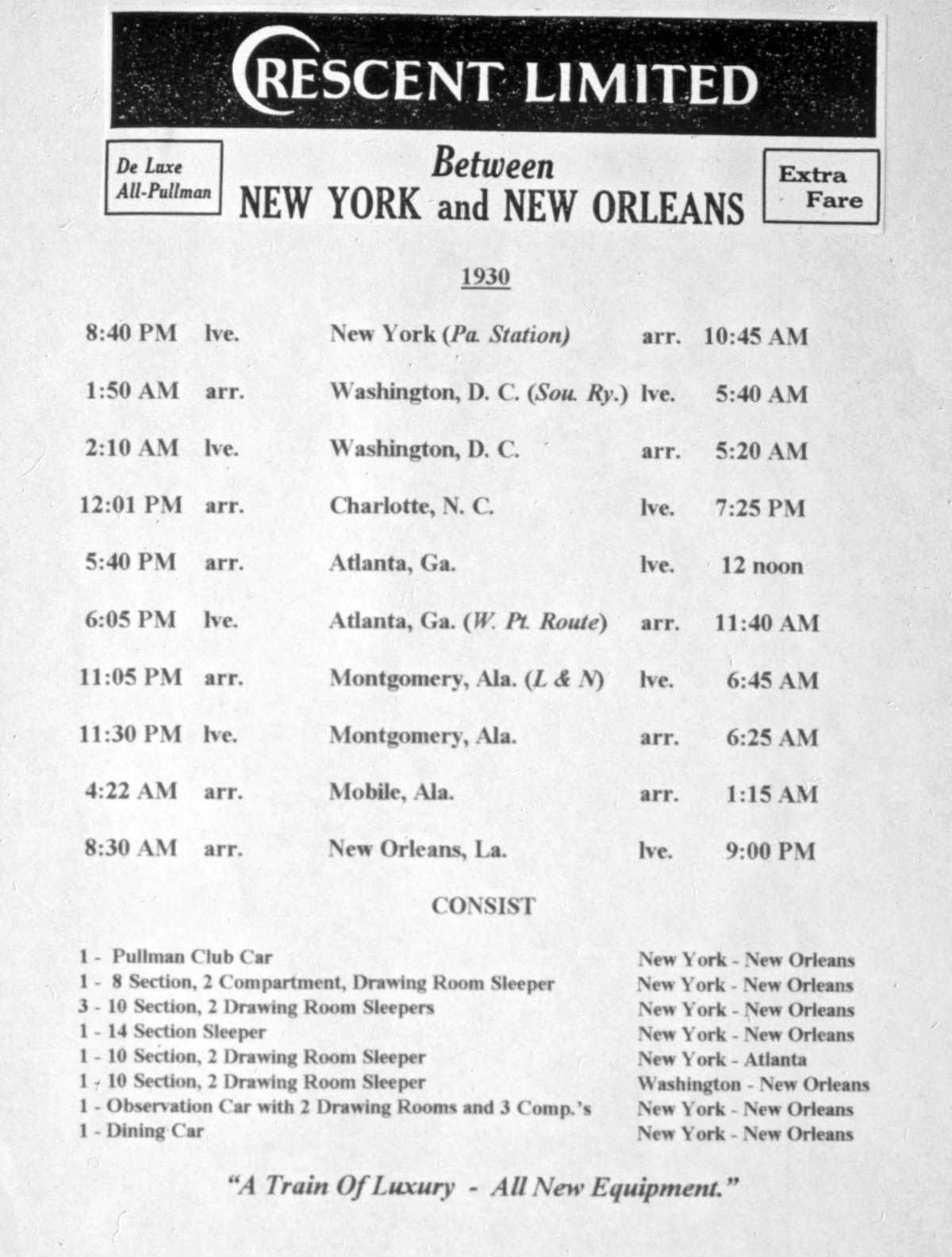
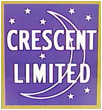 The Crescent Limited was the Southern Railway’s most famous flagship train. The Crescent Limited ran between New York City and New Orleans on the Pennsylvania Railroad north of Washington DC and on the Southern Railway on its busy mainline between Washington and Atlanta via Charlotte NC. South of Atlanta, the Crescent Limited was handed off to the Atlanta & West Point (Alabama), the Western Railway of Alabama, and the Louisville & Nashville between Montgomery Alabama and New Orleans. The train was called the Crescent Limited because Crescent City is a nickname for New Orleans.
The Crescent Limited was the Southern Railway’s most famous flagship train. The Crescent Limited ran between New York City and New Orleans on the Pennsylvania Railroad north of Washington DC and on the Southern Railway on its busy mainline between Washington and Atlanta via Charlotte NC. South of Atlanta, the Crescent Limited was handed off to the Atlanta & West Point (Alabama), the Western Railway of Alabama, and the Louisville & Nashville between Montgomery Alabama and New Orleans. The train was called the Crescent Limited because Crescent City is a nickname for New Orleans.

